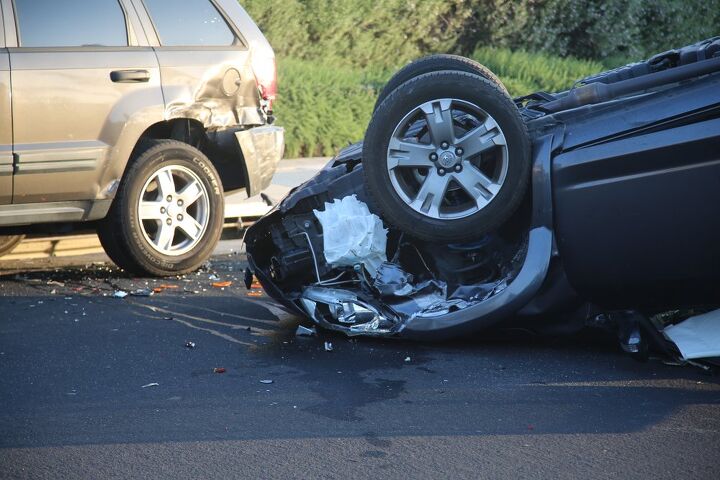#PedestrianFatalities
Why Are Traffic Deaths Increasing While People Are Driving Less?
The latest data from the National Highway Traffic Safety Administration (NHTSA) is confirming what local agencies have already been suggesting. Last year represented another sizable increase in U.S. roadway fatalities, pitching up by 10.5 percent over the elevated death rate witnessed in 2020. The agency has estimated that 42,915 people were killed in 2021, whereas 2020 resulted in 38,824 fatalities — a 7.1-percent increase over the declines seen in 2019. While the current situation is not nearly as bad as the rates witnessed during the 1970s, this still represents the highest per capita fatalities in sixteen years and everyone is trying to get a handle on why.
Traffic deaths have been on the rise since the start of the pandemic, confusing everyone who counts crashes because the supporting data also shows that there was a lot less driving being done during the period. Historically, years where people are disinclined from hitting the road due to a beleaguered economy tend to represent far fewer traffic-related fatalities. We can see this happening in 1942 when the U.S. braced itself to enter World War II by rationing everything from fuel to rubber. Another glaring example takes place in 1932, as the nation reached the darkest point in the Great Depression. In fact, there are very few examples of per capita improvements in on-road deaths from the pre-war period, and those that do exist coincide directly with economic recession.
Pedestrian Deaths Ballooned Against Miles Driven Last Year
The Governors Highway Safety Association (GHSA) released the latest data pertaining to U.S. pedestrian fatalities — indicating that the largest-ever annual increase since we started keeping track in 1975. While the data is preliminary, the association estimated there were 6,721 pedestrian deaths in 2020. It’s a 4.8 percent increase over 2019 and not all that impressive until you realize most people basically gave up their normal driving routine during lockdowns. According to the GHSA, adjusting for miles driven actually results in an annual increase of 21 percent.
It’s genuinely creepy and kind of perplexing with everyone staying isolated. But we’re not going to recommend you start wearing high visibility jackets whenever you leave your home because the mathematical likelihood of being crushed by an automobile remains incredibly low.
NHTSA Estimates Minor Improvement in Roadway Fatalities for 2018
The National Highway Traffic Safety Administration has released its preliminary report on how many people died on U.S. roadways in 2018, indicating that overall traffic deaths had likely fallen by 1 percent. While the information doesn’t exactly justify a party, it’s good news after the last few years attempted to provide new footage for the Red Asphalt series.
As the first major spike in traffic deaths since the “Swinging Sixties,” 2015 freaked everyone out a bit. Save for a few annual hiccups, American traffic deaths (contrasted with its population) had been on the decline for decades. However, by the end of 2016, things looked certain — it was becoming less safe to drive in the United States.
Deadly Design: SUV Proliferation a Contributing Factor in Pedestrian Deaths, Study Says
Sport-utility vehicles and crossovers are great for families who want maximized interior volume and a sense of security, but the high-riding vehicles are a double-edged sword. In addition to being less economical than a sedan with a similar footprint, the design doesn’t bode well for pedestrians. In fact, the proliferation of SUVs may be the largest contributing factor to pedestrian fatalities right now. From 2009 to 2016, fatal single-vehicle crashes involving utility vehicles increased by 81 percent.
That’s disconcerting, considering the number of pedestrian killed on U.S. roads declined by 20 percent since 1975, hitting an all-time low in 2009. However, in 2016 the death toll had climbed back up to the highest levels since 1990. The Governors Highway Safety Association estimated nearly 6,000 people were fatally struck by vehicles last year, with around 4,700 of those deaths occurring in urban or suburban areas. Conversely, those same environments only saw 2,959 deaths in 2009.
The increase in fatalities cannot be contributed entirely to the design of SUVs. Distracted driving, encouraged by smart phones and increasingly complicated infotainment systems, has undoubtedly pressed the issue. But, when a strike does occur, the shape of a vehicle still plays an enormous factor.



















Recent Comments